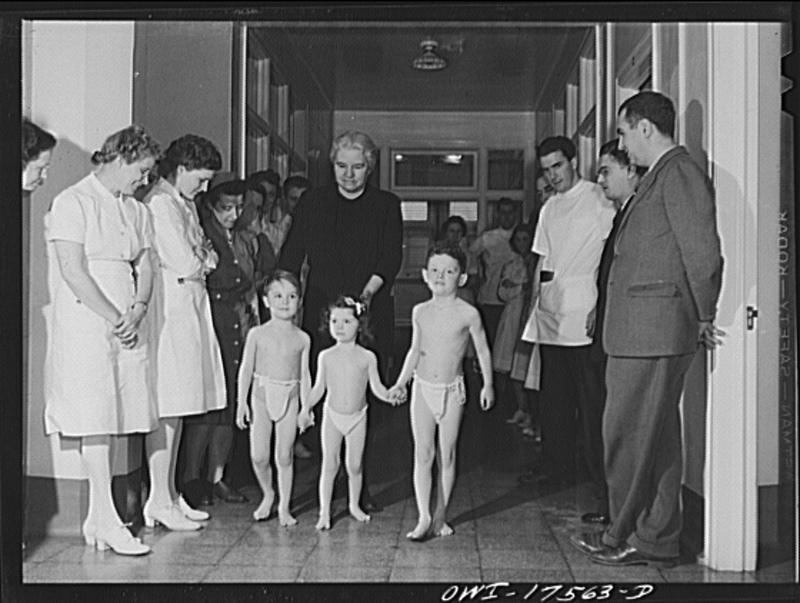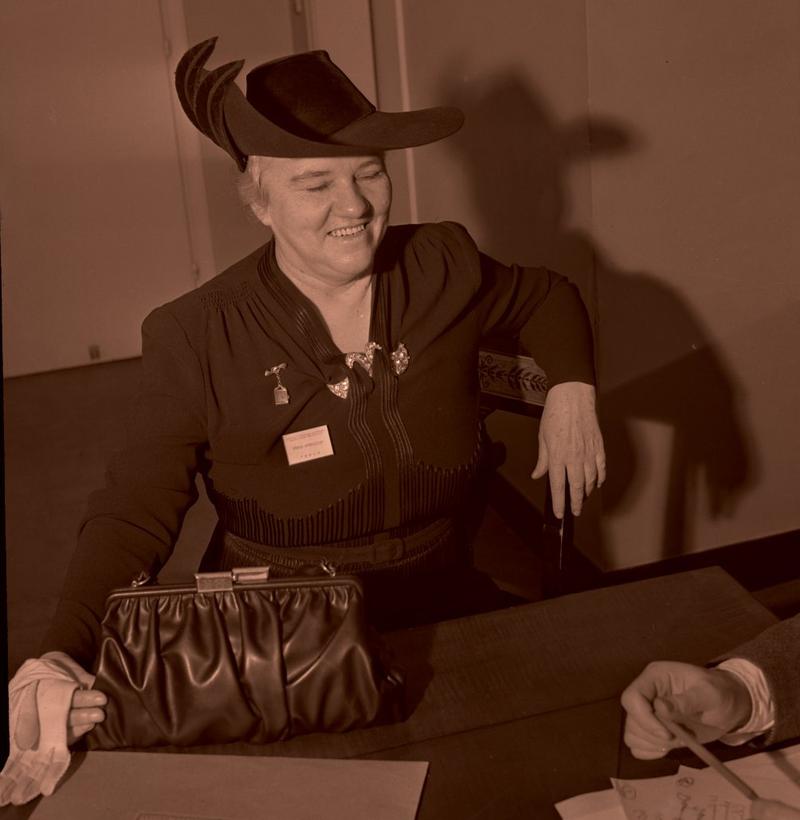 NYPR Archives & Preservation
NYPR Archives & Preservation
Pennies for Kenny (Episode 5)

Everyone was afraid of polio in the 1930s and 40s. In a matter of days or weeks, what seemed like a simple fever or headache could turn out to be a crippling disease with life-long after effects.
And the treatment was sort of part of the problem. For most of the 1930s, doctors would immobilize polio patients in splits and casts to keep them from injuring themselves and moving too much. But Sister Elizabeth Kenny, an Australian nurse, thought that these splints and casts were actually making the long-term muscle problems worse. Instead of keeping patients still, she worked with their muscles, "re-educating" them through physical therapy.
Kenny brought this method to the United States in 1940. Doctors in New York and at the Mayo clinic weren't quite sure what do do with her. She wasn't even a licensed nurse, just an Australian "bush nurse," or someone who learned nursing through apprenticeship and experience, but not accredited schooling. Eventually, though, she founded the Sister Kenny Institute in Minneapolis, trained technicians in her method, and spread it across the United States, in various forms and under various names.
The Kenny Institute created a number of media campaigns to raise money, including these radio plays. She also was featured in endless newspaper articles, as well as comic books (“Australian Bush Nurse,” Real Heroes, no. 5, “Sister Elizabeth Kenny,” Wonder Woman, no. 8, and “Sister Kenny,” It Really Happened, no. 8). Later, there were radio plays about her life-- a 1942 radio play on Cavalcade of America, another on the WGN "America at the Ramparts" series, and one on WBBN's Coronet Little Show in 1945.
There was even a Sister Kenny movie in 1946.
In this episode of Backtrack, we take a closer look at all the media hype around Kenny, and put it into context.
Thanks to Dr. Naomi Rogers, author of Polio Wars: Sister Kenny and the Golden Age of American Medicine, for speaking to us for this episode. Thanks also to Renee Dunn, for her interview.
In this piece, we drew brief snippets from this Cavalcade of America radioplay about Sister Kenny, as well as this March of Dimes promotional polio video.
The list of comic books comes from one of the many sources we read for this—Bert Hansen's Medical history for the Masses-- How American Comic Books Celebrated Heroes of Medicine in the 1940s. Naomi Roger's ‘Silence has its own Stories’: Elizabeth Kenny, Polio and the Culture of Medicine' and her book 'Polio Wars' were also particularly helpful.
Special thanks to John Passmore, Andy Lanset and Hannah Sistrunk.
The rest of the episodes of Backtrack can be found here.
